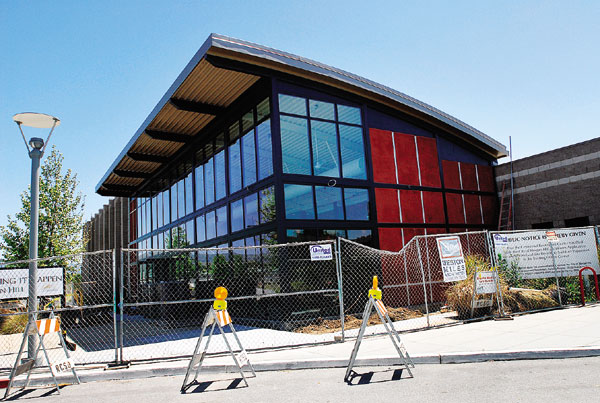Standing out as an exception among city services that have been
cut piecemeal in recent years is Morgan Hill’s booming recreation
and community services department, which has seen revenues
generated by the use of its flagship public facilities climb
drastically since they were built.
Standing out as an exception among city services that have been cut piecemeal in recent years is Morgan Hill’s booming recreation and community services department, which has seen revenues generated by the use of its flagship public facilities climb drastically since they were built.
And that’s not only good for the city’s bottom line in a department that used to gobble up more than $1.6 million from the general fund, according to the department’s supporters. It’s also a sign that Morgan Hill is increasingly secure as an attraction for sports and fitness enthusiasts, and that families and children are taking advantage of unique and healthy options.
“It’s an outstanding success story, and one that people should be proud of,” Councilman Greg Sellers said. “It irks me when people say all you need to do (to reduce the deficit) is to slash recreation funds. That’s naive and short-sighted. Not only would you not achieve your budget goals, but you would put more kids on the street and create more problems than we could solve.”
The city’s Recreation and Community Services Department includes the operation and upkeep of the Centennial Recreation Center, the Aquatics Center, the Outdoor Sports Center, the Community and Cultural Center, and the Community Park’s picnic pavilions and tennis courts.
San Martin resident Mary Fuentes and her family have been members at the CRC for only about three months, but they visit the facility up to three times a week. One recent afternoon she had just finished swimming with her daughters, age 9 and 4. Her 12-year-old son plays basketball at the indoor courts. She added that she attends aerobics classes. She and her husband started the membership mostly for their children.
“My children need to make more friends and get more exercise,” Fuentes said. “And the whole family spends more time together.”
As of March, city staff expected the department to recover about 87 percent of its expenses for the year. That spells a total projected net expense from the general fund of about $$255,800, according to city staff. Just four years ago, in fiscal year 2006-2007, that cost was about $1.6 million.
The sharp decline is due largely to an equally sharp rise in memberships and fees to use the facilities, and overall greater demand, according to department director Steve Rymer. The department began offering monthly memberships in July 2006, when the CRC was constructed. As of Feb. 2010, the total number of membership units for both the CRC and Aquatics Center is about 3,095. About half of those are family memberships, which cost about $80 per month for each facility, bringing the total members close to about 9,000.
“When the CRC came online the community really embraced it right from the get-go,” Rymer said.
Revenue from memberships alone is about $2.4 million this year. Daily passes to all of the department’s facilities are projected to generate about $401,000.
And the Aquatics Center continues to open more programs that draw competitive swimmers and beginners, Rymer added.
Part of the city’s marketing strategy was to combine use of the CRC and Aquatics Center under a single membership, Rymer said.
Plus, some of the facilities, such as the Aquatics Center and the OSC, are intended to draw regional as well as local use. Most of the CRC members are Morgan Hill residents, with most of the rest from San Martin, Gilroy and south San Jose. The OSC draws sports teams from all over northern California.
Gilroy resident Mary Beth Peddie has a family membership to the CRC. Her daughter teaches swim classes, and her son uses the facility’s extensive weight training options. The family has been a member for about a year, and Peddie said the CRC is nicer and “cleaner” than gyms and public recreation facilities in Gilroy.
“We’re really impressed with it,” Petty said. “They have something to offer everybody.”
The recreation department is also expected to generate another $671,600 from rentals of the CCC, OSC and parks and fields by the end of the fiscal year June 30. That includes the rental of part of the CCC to Gavilan College.
The facilities were all built with Redevelopment Agency funds in two-year steps – the CCC was built in 2002, the Aquatics Center in 2004, and the CRC in 2006.
Construction is currently underway on an expansion of the CRC’s fitness center, which will add more aerobics and weight lifting options when it opens later this month.
But it’s not just the continually rising use and memberships that feed the department’s success. Rymer added that in the last three years, revenues have grown 45 percent, and expenses have grown by about 11 percent. That has been achieved by moving staff around to work at a number of different facilities instead of keeping them at just one. “They work at the areas where the demand is,” Rymer explained.
An 87 percent rate of revenue recovery in a public recreation department is rare across the country, according to city officials.
“It’s not just better than most cities – it’s incredibly better than most cities,” Councilman Larry Carr said. “Most cities strive for about 25 percent recovery.”








